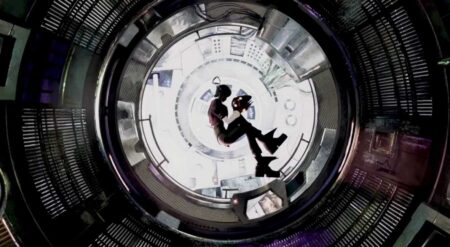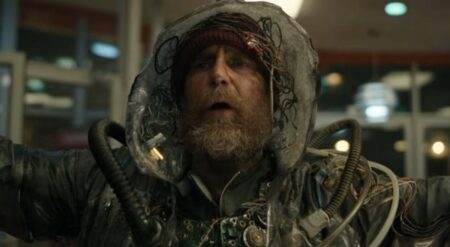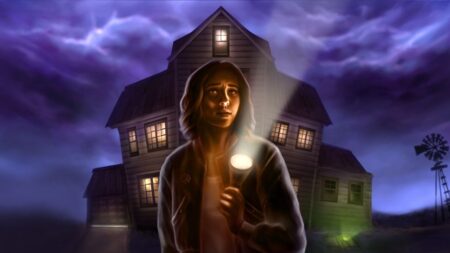
Conventions have changed from their usual in-person form and moved virtual. This coming weekend, September 4 – 6, 2020, the Virtual Crunchyroll Expo (VCRX) will be connecting anime fans together with each other and with special guests. One of those guests is Roland Kelts, a journalist and author of Japanamerica: How Japanese Pop Culture has Invaded the US, he will be appearing on a panel entitled “Anime and Race” with Arthell Isom, the founder of the first and only Black-owned studio in Japan, D’ART SHTAJIO.
Kelts is a half-Japanese Tokyo-based journalist, editor, and scholar specializing in Japanese culture. His first book, Japanamerica: How Japanese Pop Culture has Invaded the US, is considered the ultimate guide to Japan’s pop culture juggernaut. As a speaker, Kelts has been a part of speeches for everything from Japanese culture think tanks, embassies and universities to pop culture conventions TED Talks and The World Economic Forum.
Additionally, Kelts is also a primary Japan contributor to The New Yorker, The Guardian, The New York Times, CNN, and The BBC. But that’s not where his long list of bylines ends. His writing is also featured in The Wall Street Journal, Time Magazine, and The Japan Times. As for academia, he has taught at both New York University and The University of Tokyo. Additionally, he is also a visiting professor at Japan’s Waseda University. Kelts has had the opportunity of interviewing anime icons including but not limited to Hayao Miyazaki, Makoto Shinkai, and Yoshiyuki Tomino.
We got the chance to ask Kelts a few questions ahead of his VCRX panel via email, where he explained his inspiration for Japanamerica: How Japanese Pop Culture has Invaded the US and even a little bit about journalism and anime.
BUT WHY THO: What was the inspiration for your book: Japanamerica: How Japanese Pop Culture has Invaded the US?
ROLAND KELTS: I was commissioned to write Japanamerica by my editor and his team at my publisher, Palgrave Macmillan (now St. Martin’s Press). They’d read some of my articles and interviews with artists like Hayao Miyazaki and Haruki Murakami and my work on Japanese youth culture and thought I’d be the right writer for the topic.
The inspiration was my Japanese family. My mother is Japanese and my grandfather was a poet and essayist. When I talked to one of my Japanese cousins about the idea, he was all for it. So I thought it would be a way to give back something to them. I lived with my grandparents when I was a child and grew up quite close to my Japanese family members.
BUT WHY THO: While writing your book, what was the most surprising piece of history you learned about how Japanese pop culture came to the US?
ROLAND KELTS: Cosplay. I didn’t know about its history and assumed it was a purely contemporary Japanese phenomenon. I was surprised to learn that many Japanese fans picked it up from the US Sci Fi scene from the 1970s, which they read about in magazines.
Then I was surprised at how many Americans (a) also thought it was purely Japanese, and (b) embraced it so fanatically, whatever their ethnic or racial backgrounds or body types. Entire families cosplay at US anime cons. Professional cosplayers sell merchandise and sell autographs.
And during the pandemic, some cosplayer communities are banding together to sew masks and other PPP gear to donate to local hospitals.
BUT WHY THO: As a journalist, what advice would you give to folks who have editors question the importance of anime/manga as a topic of coverage in the US?
ROLAND KELTS: Try to tie it into a broader cultural topic that has more immediate relevance — like ‘anime and BLM,’ for example, or manga and foodie culture. If an editor has news they can peg your story to, that will help make it publishable.
Also, and this may be more important, pursue an angle on your story that really excites your passions. People who don’t write or read much don’t realize how important voice is to a story, especially a culture story. Your voice will come alive if you really care about what your writing about.
The “Anime and Race” panel will discuss how anime, how, to audiences outside Japan, the round-eyed, blond-haired, non-racial (or “stateless”) characters can look a lot like white people. So what about representation? This question is more urgent with both Black Lives Matter and Hollywood’s habit of “whitewashing.”
In this three-part panel, Kelts and Isom will discuss the history of anime starting from the 60s to the 80s and how artists like Osamu Tezuka (Astro Boy) and the Yoshida Brothers (Speed Racer) wanted their works to go global and how doing so meant plating into the global stereotype: white characters. Then they’ll dive into the the 90s and it brought us baby steps forward with anime like Blood, Afro Samurai, and Samurai Champloo. And finally, they’re discuss D’Art Shtajio and other anime studios are proactively representing Black characters and Black culture and by doing so are transforming anime and fandom.
“Anime and Race” will take place Friday, September 4 from 5:15 – 6:15 PM PT on the Hime Stage. For your free passes to VCRX, head to the Crunchyroll Expo page here.


![[EXCLUSIVE] Palia Devs Dive Into Winterlights, New Tints, Lunar Paths, And More From Upcoming Patch Palia Winterlights Patch](https://butwhytho.net/wp-content/uploads/2025/12/Palia-Winterlights-But-Why-Tho-450x247.jpg)



